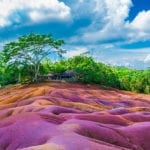 Crime
Crime  Crime
Crime  Technology
Technology 10 Hilariously Over-Engineered Solutions to Simple Problems
 Miscellaneous
Miscellaneous 10 Ironic News Stories Straight out of an Alanis Morissette Song
 Politics
Politics 10 Lesser-Known Far-Right Groups of the 21st Century
 History
History Ten Revealing Facts about Daily Domestic Life in the Old West
 Weird Stuff
Weird Stuff 10 Everyday Products Surprisingly Made by Inmates
 Movies and TV
Movies and TV 10 Actors Dragged out of Retirement for One Key Role
 Creepy
Creepy 10 Lesser-Known Shapeshifter Legends from Around the World
 Animals
Animals 10 Amazing Animal Tales from the Ancient World
 Gaming
Gaming 10 Game Characters Everyone Hated Playing
 Crime
Crime 10 Terrifying Serial Killers from Centuries Ago
 Technology
Technology 10 Hilariously Over-Engineered Solutions to Simple Problems
 Miscellaneous
Miscellaneous 10 Ironic News Stories Straight out of an Alanis Morissette Song
Who's Behind Listverse?

Jamie Frater
Head Editor
Jamie founded Listverse due to an insatiable desire to share fascinating, obscure, and bizarre facts. He has been a guest speaker on numerous national radio and television stations and is a five time published author.
More About Us Politics
Politics 10 Lesser-Known Far-Right Groups of the 21st Century
 History
History Ten Revealing Facts about Daily Domestic Life in the Old West
 Weird Stuff
Weird Stuff 10 Everyday Products Surprisingly Made by Inmates
 Movies and TV
Movies and TV 10 Actors Dragged out of Retirement for One Key Role
 Creepy
Creepy 10 Lesser-Known Shapeshifter Legends from Around the World
 Animals
Animals 10 Amazing Animal Tales from the Ancient World
 Gaming
Gaming 10 Game Characters Everyone Hated Playing
Top 10 Most Famous Sinkholes Around the World
Recently, sinkholes have received a lot of media attention. They serve as a powerful reminder of how quickly nature can take away what it has given. Sinkholes are natural wonders that may be found all over the world. You will encounter many sinkholes as an explorer, each with its peculiarities. Some have subterranean water features or entire forests, while others are dirt-filled basins. Although impressive, sinkholes can be dangerous and result in significant damage if they occur in populated regions.
Sinkholes can be as beautiful as they are dangerous, with mysterious blue holes, dazzling swimming spots, enormous caverns beneath the earth, and falling pits. Let’s explore ten of the most famous sinkholes around the world.
Related: 10 Mysterious Cave Temples
10 Qattara Depression, Egypt
Northwestern Egypt, especially the Matruh Governorate, is home to the Qattara Depression. The depression is a portion of Egypt’s Western Desert. Underneath the Qattara Depression, which is submerged, are salt pans, dunes, and salt marshes. The interaction of wind erosion and salt weathering led to the formation of the Qattara Depression.
In smaller but comparable depressions, some 12 miles (20 kilometers) to the west of the depression, are the oases of Siwa in Egypt and Jaghbub in Libya.
9 Blue Hole of Dahab, Egypt
One of the most well-known sights in Sinai and a must-see location in Egypt is the Dahab Blue Hole. It is situated on the Red Sea coast of the Sinai Peninsula in Egypt, a few miles north of Dahab. Divers with experience and tourists from all over the world come to the Blue Hole to explore.
The Blue Hole’s first section is 20 feet (6 meters) deep and is known as “The Saddle.” It is followed by a tunnel 85 feet (26 meters) long, known as “The Arch,” whose ceiling rises to a height of 180 feet (55 meters) and whose bottom extends to the seaward side of the hole at roughly 394 feet (120 meters). The depth at the seaward side ranges from 3,280 to 9,650 feet (1,000 to 3,000 meters).
The Blue Hole, renowned for freediving due to its convenient access from the coast and absence of current, is considered to have the most diving deaths worldwide, with an estimated 130 to 200 divers dying in recent years. Unknown factors, such as why the Blue Hole is the world’s most dangerous diving location, do not change the fact that it is not a place for beginners to play.
8 Macocha Gorge, Czech Republic
The Moravian Karst cave system in the Czech Republic contains a sinkhole known as the Macocha Abyss, often called the Macocha Gorge. The sinkhole is the deepest of its kind (light hole type) in Central Europe at 454 feet (138.5 meters). It is a well-liked tourism destination for locals, especially cavers and highly skilled technical divers.
Macocha and the lovely green region surrounding it has a mystical, even magical, feel. In the same way that Prague is home to the infamous Nuselsk Bridge, this spot is where suicides take place. Over the past century, dozens of people have decided to take their own lives here.
But the uplifting effect of the natural environment will charm you. Everywhere you turn, there is beautiful foliage, which is truly a tranquilizer. The top and lower bridges both provide views of the abyss. The lower one is 300 feet (92 meters) above the low portion of the chasm and offers a clear view of the bottom, while the upper one stares down from a height of 453 feet (138 meters).
7 Cennet-Cehennem, Turkey
The names of two sizable sinkholes in Turkey’s Mersin Province’s Taurus Mountains are Cennet (Heaven) and Cehennem (Hell). Due to their astounding size and distinctive characteristics, the sinkholes are becoming popular tourist destinations.
The enormous pit known as Cennet ökügü (Heaven) is 820 feet (250 meters) long, 360 feet (110 meters) wide, and 196 to 230 feet (60 to 70 meters) deep. It is accessed through a 426-step limestone stairway, making it a taxing visit. Trees with bird nests cover much of the pit’s floor. The cave entrance, where a cave chapel dedicated to the Virgin Mary dates back to the fifth century, is announced by a cool breeze. The church is rectangular and faces east and west. It has six arched windows on its long sides. A four-line inscription on the entrance door on the western side states that a devout man named Paulus erected the church in honor of the Virgin Mary.
A vault surrounds the apse and the monks’ quarters on both sides. Frescoes depicting Christ and his apostles adorn the apse. A trail goes to a sump following a cold underground stream that emerges from the cave behind the church. An ancient Zeus Temple from the Hellenistic Era is situated at the far end. On the stones on the north wall are the names of 130 priests who served during the Hellenistic and Roman eras. The Doric-style temple was altered into a church during the Christian era.
The location of Cehennem (Hell) is about 245 feet (75 meters) northeast of Cennet. A nearly circular daylight shaft is 197 feet (60 meters) wide and 394 feet (120 meters) deep. It is believed to be smaller because of its lower circumference, but it is deeper, and the locals found it quite frightful. This may be the origin of the name “hell,” and the chapel is undoubtedly the cause of the name “heaven” for the other pit. On a steel ladder, it is also possible to visit this hole, but this is not advised for the typical tourist as it is quite risky.
6 Devil’s Sinkhole, Texas
One of Texas’s top caverns and one of America’s fabled iconic pits is the Devil’s Sinkhole. The cave is a massive 65 to 98-foot (20 to 30-meter) diameter shaft that plunges 138 ft (42 meters) into a space with a diameter of more than 328 feet (100 meters). It is the largest and third-deepest single-chamber cavern in the state and has been listed as a National Landmark since 1985. It’s a part of a huge network of caverns beneath the Edwards Plateau, which stretches across West and central Texas. The collapse of an underground cavity caused the sinkhole to form.
One to four million Mexican Free-Tailed Bats spend the summer in the sinkhole. Visitors can start seeing a few bats emerge from the sinkhole around dusk, and eventually, millions of them will be flying into the evening sky in a whirling black mass.
5 El Zacaton Sinkhole, Mexico
With a total depth of 1,112 feet (339 meters), El Zacaton is the deepest known water-filled sinkhole in the world. Although the Pozzo del Merro, which is 1,286 feet (392 meters) deep (exact depth unknown), is deeper, it is still unclear if it is a sinkhole or a nearly vertical cave. At least one diver has lost their life while attempting to reach the bottom, which has never been done.
The most noticeable and well-known feature in this karst landscape is the El Zacatón sinkhole. Over 20 distinct phenomena may be found in this area, including sinkholes, springs heated by subterranean volcanic activity, caverns, and travertine formations.
Five peculiar sinkholes close to one another but not directly connected include El Zacaton, the deepest of all. El Zacaton is named after Zacate grass islands, which float freely and shift position in response to wind. El Zacaton has gained popularity as a diving location due to its depth. In El Zacaton, both male and female divers have broken world records.
4 Cave of Swallows, Mexico
The Cave of Swallows is home to the region’s biodiversity and is ranked among the top six most stunning and bottomless underground caverns. Due to the lack of human intervention, it is a component of San Luis Potos’s Protected Natural Area. A vertical shaft drops 1,220 feet (372 meters)—or 1,904 feet (580 meters) from the higher edge—before reaching the cave floor. This type of cave is referred to as a pit cave. It is essentially a 160- to 205-foot (49- to 62-meter) gaping hole in the forest floor. The Chrysler Building, the Eiffel Tower, or the Statue of Liberty could all fit within if they were standing on their shoulders.
It is lofty enough for BASE jumpers (Buildings, Antennas, Spans, and Earth) to leap off the edge and free-fall for a few seconds before opening their parachute. This location is popular with extreme sports fans.
3 The Great Blue Hole, Belize
One of the natural wonders is the Great Blue Hole of Belize, situated off the shore of Belize on Central America’s east coast. It is located not far from the Center of Lighthouse Reef, an atoll about 62 miles (100 kilometers) from Belize City on the mainland.
The Great Blue Hole in Belize is 410 feet (125 meters) deep and more than 984 feet (300 meters) wide. The Great Blue Hole is situated on the Lighthouse Reef Atoll, one of Belize’s three atolls. The Hole is a part of the Belize Barrier Reef Reserve System, a UNESCO World Heritage Site, and is shaped like a perfect circle in the middle of the coral reef known as the Lighthouse Reef.
The Hole has a huge global fan base, and Belizeans are passionate about having it recognized as one of the world’s seven wonders. The Great Blue Hole was named the top location on Earth by The Discovery Channel in 2012.
2 Crveno Jezero Red Lake, Croatia
The karst phenomenon of Crveno Jezero is renowned for its magnitude and distinctive characteristics worldwide. A few hydrological measurements on the lake’s surface were taken in the 1950s, including depth readings at 39 sites.
With 18 large or little dry or water-filled depressions, the Red Lake, less than a mile (one kilometer) west of Imotski, is the largest in the area in terms of both its visible and invisible areas. Its name refers to red rocks perched on cliffs that rise more than 820 feet (250 meters) above the ground.
1 Xiaoxhai Tiankeng, China
The largest sinkhole in the world, Xiaozhai Tiankeng, is over 2,000 feet long, 1,762 feet wide, and about 2,200 feet deep (610 meters long, 537 meters wide, and 671 meters). Locally known as the Xiaozhai Heavenly Pit, it is a karst sinkhole in the Shaanxi Cluster, located in the Shaanxi Province of China. Xiaozhai Tiankeng has a distinctive appearance since it is a double-nested doline made up of two bowls. While the other bowl is 1,122 feet (342 meters) deep, the upper bowl is just about 1,050 feet (320 feet) deep. An inclining ridge separates the two parts.
Locals had long known about this feature, but it wasn’t until British explorers discovered it in 1994 that the rest of the world became aware of it. While exploring its underground cave system, the explorers made multiple fruitless attempts. They had trouble navigating the sinkhole’s torrent. Consequently, Xiaozhai Tiakeng’s geology is still a mystery. Due to the activities of an underground river, which still flows through the sinkhole, this sinkhole formed above the Dinfeng Cave.








